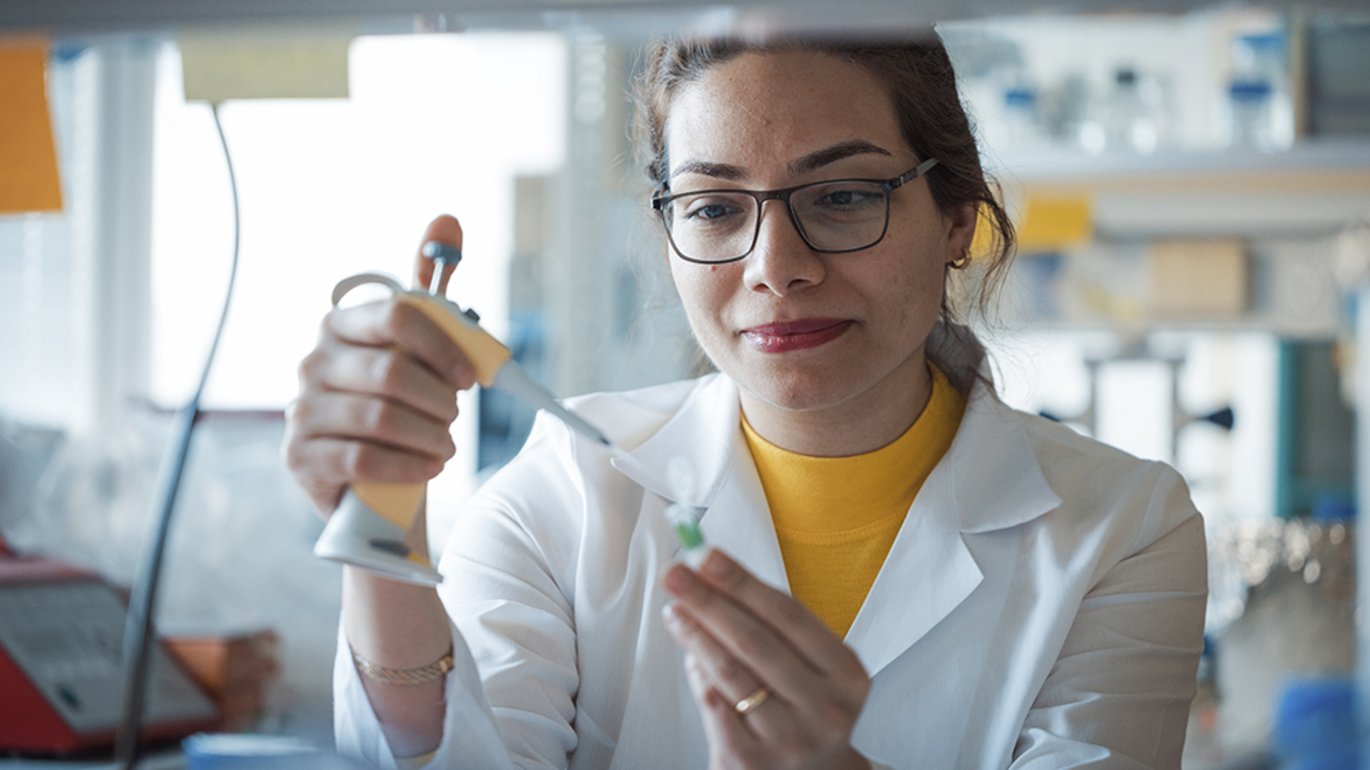NCMM visits The Danish Research Institute of Translational Neuroscience (DANDRITE)
Elham Shojaeinia is a PhD student in the Esguerra group at NCMM. She recently visited DANDRITE at Aarhus University, Denmark to learn in depth about the principles of neural organization

Note: this article originally appeared on the NCMM website: https://www.med.uio.no/ncmm/english/news-and-events/news/2022/NCMM-visits-The-Danish-Research-Institute-of-Translational-Neuroscience
Elham Shojaeinia studies rare neurodevelopmental disorders causing epileptic seizures in children using the zebrafish model organism. She is a PhD fellow in the research group of Dr Camila Esguerra at NCMM. The Principles of Neural Organization PhD course at The Danish Research Institute of Translational Neuroscience (DANDRITE), an interdisciplinary research institute hosted by Aarhus University in Denmark, gave Elham the opportunity to learn in depth about neural design and apply that to what she observes in her zebrafish research.
From brainless organisms to the largest brains
DANDRITE is the Danish node of the Nordic EMBL Partnership for Molecular Medicine.
At DANDRITE, Elham participated in a comprehensive course covering ‘the whys’ of brain design – from the basics of why animals need a brain, to studying neurons, their structure, how they communicate, how they grow and the unanswered mysteries of brain design. The broad and intensive 5 credit course comprised of six full days of study and was assessed via the presentation of a paper on one of the topics covered. Two half days were spent in the laboratory – one for whole calcium imaging of the mouse brain and the second for brain activity recording of the mouse brain.
— We went from the simplest brains to the most complicated ones and discussed how and why they are shaped in certain ways. By the last day we discussed evidence that the modern human is losing some parts of the brain and possible reasons for these changes in the modern environment, explained Shojaenia
Elham returned with practical knowledge related to her research
The course has been fruitful for Elham’s research. Since she works on pediatric related syndromes, she was able to directly relate the knowledge she gained about the arborization of neurons to her experimental observations in zebrafish.
— I got some very useful information about the shape of neurons, why they function as they do, and why in some zebrafish mutants I observe less complicated branches and less synaptic points, whereas in others I observe more. This has helped me to draw some conclusions about what I see in my experiments, or at least given me a clue about possible reasons for my observations, says Shojaeinia
NordForsk grant enabled the opportunity
Elham’s attendance on the course was partially funded by a grant from NordForsk, an organisation under the Nordic Council of Ministers that provides funding for and facilitates Nordic cooperation on research and research infrastructures. Funding of 2.5 million NOK was awarded to the Nordic EMBL Partnership by NordForsk as part of their ‘Nordic Research Infrastructure Hubs’ initiative in 2020. The grant enables a further strengthening of molecular medicine in the Nordic countries through the Nordic EMBL Partnership. It also enables the Partnership to better exploit its distributed infrastructures, whilst improving their accessibility and facilitating better knowledge exchange to ensure contemporary approaches in molecular medicine.
Commenting on her visit to DANDRITE, Elham said:
— NCMM informed us that there was a grant available to the Nordic EMBL nodes to provide partial support for attending different PhD courses across the Nordics. I spoke with both of my supervisors, and they encouraged me to apply for funding support to attend the course Principles of Neural Organization. I highly recommend others to apply for funding support and take the opportunity to visit EMBL or one of the other Nordic EMBL nodes! It was great to see their facilities, how they manage their experiments, their equipment, and to network with other scientists.
Commenting on the Principles of Neural Organization course, DANDRITE Group Leader Dr Sadegh Nabavi said:
— The course went quite well. Students were highly engaged and involved. During and after the course we asked them for their input. They were happy that they took the course and believed they now have a deeper understanding of the nervous system in terms of its design and how that gives it that give such incredible efficiency and power. The course addressed an important angle, which has been missing in the courses that have been offered to the students so far.